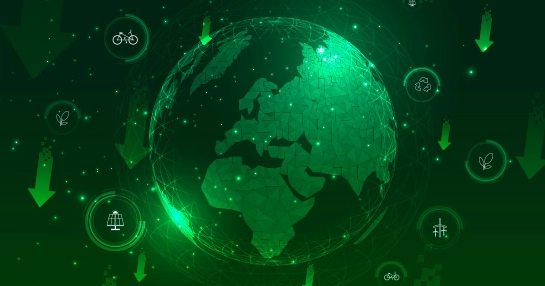For many businesses hoping to bounce back in 2022, things haven’t gone as planned. In fact, with events such as the ongoing Russian invasion of Ukraine, oil and energy costs have increased and recovery seems distant.
How should businesses prepare for the remainder of 2022? What should their key strategy be?
Get the answers in this podcast conversation between GEP senior director Rafiq Merchant and consulting manager John Carter. Understand the global macroeconomic trends and the elevated roles of supply chain and procurement professionals amid ongoing uncertainty. Get expert insights to effectively deal with challenges in the new normal.
What You’ll Hear:
- Why businesses must rethink their pricing strategy and supplier network design
- Top priorities for supply chain and procurement leaders in 2022
- How enterprises can build capabilities to manage their overall value chain
Welcome to GEP Insights. On this podcast, you will hear cutting edge thoughts on supply chain, sustainability and strategies to help your business succeed. For more information, visit gep.com and now our latest episode.
John Carter: Welcome, you are listening to GEP Insights for intelligent procurement and supply chain conversation. I am your host John Carter and today I am joined by consulting senior director Rafiq Merchant. Rafiq, thank you for joining the podcast.
Rafiq Merchant: Absolutely, John, thanks so much for having me.
John Carter: Well, before we get started, do you mind introducing yourself and sharing about what you do at GEP?
Rafiq Merchant: Sure, I will be happy to. As you mentioned, my name is Rafiq. I am a senior director here at GEP, nearly approaching 10 years at the organization and I am responsible for leading many of our larger scale sourcing and transformation engagements. And currently, really working closely within the telecom vertical. So, really happy to be here and excited to talk about our Outlook report.
John Carter: Excited to have you. Well, this is the first of 2 episodes where we will be unpacking GEP’s recently published 2022 Outlook report. During this episode, we are talking through the 1st half of the report which really predicts the global business and macroeconomic trends we can expect to see in the year. Whereas the 2nd episode, we will really dive into the main leadership themes GEP sees taking centerstage. So we are going to break down each of the 5 major trends highlighted in the report. Maybe at a high level, Rafiq, if you had to explain to us in just a few sentences why trends are important to discuss, especially in the context of supply chain and procurement.
Rafiq Merchant: Sure thing, John. And I think we are starting to see the impact of supply chain and procurement really start to reach the living rooms across the country whether it’s the increase in retail prices when we are going out and shopping or we are starting to see a lot of the labor shortages when we potentially go to fast food restaurants or go out to eat. A lot of these challenges are impacting our day-to-day lives. These supply chain disruptions that started with the pandemic are now continuing to rise due to the current global geopolitical tensions between Russia and Ukraine and that’s really put a spotlight on supply chain and procurement functions to really elevate their roles. The businesses are having to start to rethink about their pricing strategies, the way they look at their product portfolios and even their supplier networks and partnerships to be able to contend with this ongoing volatility and more importantly the supply scarcity that we are continuing to see. Supply chain and procurement professionals right now I feel need to evolve and this has to be done holistically and they have to look across the entire value chain. Whether that’s their customers, the suppliers, the third-party manufacturers that they work with or logistics providers and finally even their technology partners. There has to be a laser focus on planning and enhanced visibility. And then I think lastly 2022 will be a year of great focus on talent retention and also the environment. Organizations will need to figure out how they can offer their employees flexibility to be able to take advantage of and access the global network through digitalization and again allow that flexible model again in this fight of retaining talent.
Environmental, Social and Governance will also I feel be at the forefront in 2022 as many organizations have already started to measure the monetary impact but I think what’s going to be more important is how they factor that into their true decision making or business decisioning process keeping ESG in mind. So really feel there is a lot to uncover as we go through this discussion but those will be some of my initial points.
John Carter: Certainly, well let’s dive into it then. Our first trend from the report is GDP growth. So we saw most economies experience negative growth in 2020, then a slight rebound last year in 2021. Should we expect to continue to see that rebound in 2022 or something different?
Rafiq Merchant: Sure, and so as you mentioned I think we are all aware during the global pandemic and the lockdowns, essentially our economy was halted and that was in 2020. But with the help of our frontline workers and the rollout of the vaccines, we started to see things recover in 2021 with global GDP growth of nearly around 6 percent. There is consensus, John that this recovery is expected to continue in 2022, but the time horizon is a bit more ambiguous, given the possibility of potentially new COVID variants that could come into play but also most recently the current global geopolitical crisis. So while we do anticipate and expect recovery in 2022, that time horizon could be elongated given the current events that are taking place.
John Carter: Makes sense. Well, the next trend is definitely on the minds of many including households when they go to the gas station. And that’s energy costs. So while oil prices were already rising, the crisis in Ukraine certainly upended a lot of predictions from the beginning of the year. So, what should we expect now?
Rafiq Merchant: This is so true John. You are absolutely right. We are all aware of the current geopolitical climate and that’s caused a significant rise in crude oil prices, with costs reaching highs of nearly 132 dollars a barrel. We really haven’t seen prices like this since the 2008 recession when prices were reaching an all-time high of around 147 dollars a barrel. And what I feel is that given the current sort of volatility and this current sort of tension and crisis between Russia and Ukraine, we can continue to expect that this volatility will continue into 2022 until there is a resolution pact that again the market sees and individuals can see. In addition to that, I think the possibility of higher output from the OPEC plus members will also help alleviate some of these pressures heading into 2022. But as you may already be aware, there is no firm commitment, and those discussions are very fluid and ongoing. So, if we do start a see a resolution pact due to the current crisis with Russia and Ukraine and we start to see again production from Russia come back into the market with countries open to accepting, we can see some of this volatility to taper off but I anticipate this will continue well into Q2.
John Carter: Makes sense, and this is definitely on the minds of logistics managers for sure. And these energy costs are definitely cutting in. So, any other major impact you see in terms of logistics or just more specific supply chain issues?
Rafiq Merchant: Yeah, I think from a distribution perspective, this will certainly continue. Just recently, I noticed or read about a reefer which is a refrigerated truck driver filling up gas in Tennessee at a price of 5 dollars and 15 cents a gallon. So of course, that cost is not going to just be consumed by the distribution company or by the manufacturer. Ultimately, that is going to trickle down to the consumer. And so, again they were transporting milk and other goods that require refrigerated transportation and distribution we can certainly expect a rise in those costs of goods and the rise in the actual price of those goods to trickle down to the consumer. So you are absolutely right. I feel that we are going to start seeing the impact across the value chain all the way from manufacturers to the distribution companies and then ultimately down to the consumer.
John Carter: Let’s move on to interest rates. So interest rates have been kept very low really for the past couple of years. But the Outlook report really predicts that these will rise somewhat in 2022. What’s the context for this and how would a rate hike affect most economies?
Rafiq Merchant: Sure. So, you are right that policymakers and central banks really wanted to incentivize growth in 2021 as we were coming out of a pandemic and they did that by keeping these interest rates low and it worked. As we discussed a bit earlier, there was very strong GDP growth in 2021 and we saw demand increase across multiple sectors. However, as we were approaching the end of 2021, the discussion shifted to inflationary pressures and this ongoing time of continued growth. The story was now that we fully expect US interest rates to increase and we expect them to increase multiple times in 2022 and that can start as early as next week when the Fed meets with many folks expecting that the interest rates will rise by 25 basis points. So, as again the policymakers and the central banks want to curb inflation, there is ongoing discussions that interest rates will continue to grow or rise. And the impact of that will eventually be potentially weakened demand as the cost of borrowing will get more expensive. So we will start to again see organizations be a bit more cautious when it comes to making new potential capital investments or gaining liquidity through borrowing.
John Carter: Alright. And then, can I connect you to the 4th trend that we are looking at is labor specifically unemployment. So this has been a topic and really any news outlet for the past 2 years and even in 2021 with the Great Resignation. What will look different in 2022 or do you think it will be more the same?
Rafiq Merchant: Yeah, this is I think going to certainly be a trend going into 2022. While we saw recovery in 2021, the employment levels still remain lower than the 2019 pre-pandemic levels. We are expecting a short reduction in unemployment by mid-2022, but we still expect there to be shortages when it comes to the labor market. As you alluded to, there was a record number of Americans that quit their jobs in 2021 as part of the Great Resignation. Really looking for again more flexibility and potentially non-traditional outlets such as the gig economy or freelance work. So, due to those constraints, we do still anticipate there being labor shortages in 2022 but the overall unemployment level should decrease.
John Carter: And our last trend is certainly the one that gets the most attention and that is inflation. Do we expect this to continue or subside in the coming year?
Rafiq Merchant: Yeah, I think it’s a combination of things, John. The continued growth that we saw in 2020 and going into 2021 with interest rates being so low. A lot of the developed and advanced economies such as the US, Europe and UK experienced record highs in terms of inflation. We are really expecting that to continue into 2022 and the reason why is again a lot of these challenges that we have talked about – the ongoing supply chain disruptions, the rise in commodity prices, the current labor shortage, and just the overall rise in demand for goods and services going into 2022. That demand is going to continue to drive inflation as we continue through the year into Q2 and beyond. We are already starting to see the impact of that with some of the rising prices that you see whether its retail goods or firms that need to increase wages due to this labor shortage. So, going into Q2 Q3, I do anticipate we will see inflation to continue to rise. However, as we approach equilibrium in the sense that the supply and demand imbalance starts to stabilize and we achieve lower unemployment rates and as organizations look for increased automation, we believe that will help cap these inflation levels as we approach the later part of 2022 and hopefully reach the forecasts it reads.
John Carter: Sure, and I think as you are talking, just seems that all of this is interconnected anyway.
Rafiq Merchant: Absolutely.
John Carter: Well, there is certainly lot to keep track of here from the GEP’s Outlook report. But if you had to summarize maybe the bottom line to these especially relating to supply chain and procurement, what would you say? And any kind of silver lining that you can see?
Rafiq Merchant: Sure. Look, I think as we go into 2022, we are seeing recovery continue, GDP growth to continue. There are still going to be many unknowns. Initially heading into 2022, the thought was what’s going to be the impact of COVID or a new variant that comes into play. How that’s going to impact many of the trends that we just discussed. As we got into the end of January into February, we of course have seen this geopolitical issue with Russia and Ukraine that has come to the forefront and the impact that that’s having on our supply chain and the disruption it’s causing. So I think 2022 will have its own set of unknowns as we continue through but there will be a spotlight on supply chain and procurement both professionals and their organizations. And its really going to be up to these professionals to figure out how they can elevate these roles and ultimately lead. So, I think it’s a very exciting time for supply chain and procurement professionals as there is a significant opportunity to make impact.
John Carter: Well, let’s end on that note. Rafiq, thank you for your time today and for walking us through all the content.
Rafiq Merchant: Absolutely, it was a pleasure. Thanks so much John.
John Carter: That’s it, join us for the next episode of GEP Insights. Thanks for listening.










